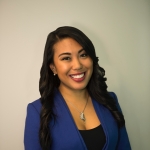
Ms. Julie Garreau
Lifting Up a Community Through the Arts
Posted by Sep 14, 2018

Ms. Julie Garreau
When people tell me they see me as a leader and influencer in the nonprofit arts world, I must confess that I don’t really see myself that way. I’m in a unique situation as a Lakota woman. First, we actually have no Lakota word for “art.” Expressing ourselves visually is something we’ve always done; it’s part of who we are as Lakota people. Art is life. We also don’t perceive leadership the same way the dominant society does. For me, it’s my honor and my responsibility to find the right ways to care for our people. In this case, I’m very fortunate to be able to help lift up my community through the arts. To me, at its heart, leadership isn’t really about leading something. It’s about using what you learn to forge a path forward. When you grow internally, that shapes what you want to do and the impact you will have. The arts absolutely can empower others in their own leadership journeys, because getting in touch with creativity in any way will change you.
Read More





























